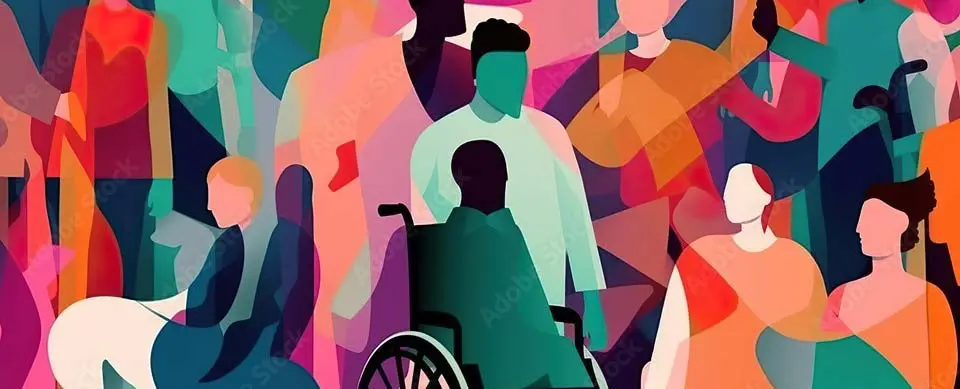RISE MODULE: Intersectionality
OVERVIEW & HISTORY
Intersectionality refers to the interconnected nature of social categorizations such as race, class, and gender as they apply to a given individual or group and their status in society. This term was established by Kimberlé Crenshaw in 1989 and had been used by many scholars such as Angela Davis and Ibram X Kendi to examine the impact of societal structures and systems' treatment of individuals because of their identities.
The concept of privilege was introduced in this module, and participants had the opportunity to consider multiple aspects of their identities, and the fact that all of us have identities that are intersectional in nature.
The implications of intersectionality in various workplaces were explored through the use of case studies and a framework to guide inclusion and belonging was shared. Participants also had the opportunity to discuss how they can be allies to others and leverage different aspects of their identities for social change.
Intersectionality refers to the interconnected nature of social categorizations such as race, class, and gender as they apply to a given individual or group and their status in society.

OBJECTIVES
- Define Intersectionality and recognize that we are all multi-dimensional.
- Discuss the challenges and advantages that come with being identified in particular ways.
- Demonstrate the fluidity and centrality that our identities can hold.
- Provide examples of how intersectionality shows up in the workplace [team, organization, school].
- Foster an understanding of the relationship between identity, privilege and power.
CONCEPT DEFINITIONS
- IDENTITY: Identity is “the fact of being, who or what a person or thing is”
- RACE: A social construction used to categorize people based on how they appear (skin, eyes, hair , etc.)
- ETHNICITY: Ethnicity is a social categorization used to refer to groups with distinct cultural practices and patterns of behavior. Refers to ancestry, nationality, religion, history, language, and genetics.
- GENDER: Gender is a social construction based on social roles, norms, and behaviors associated with masculinity and femininity. Gender transcends biology and involves psychological, societal, and behavioral norms and patterns of behavior.
- SEX: refers to a set of biological attributes in humans and animals. It is primarily associated with physical and physiological features including chromosomes, gene expression, hormone levels and function, and reproductive/sexual anatomy. Sex is usually categorized as female or male but there is variation in the biological attributes that comprise sex and how those attributes are expressed.
- CLASS: the system of ordering a society in which people are divided into groups based on perceived social or economic status.
- PRIVILEGE: According to Sensoy & DiAngelo (2012), privilege is “the rights, advantages, and protections enjoyed by some at the expense of and beyond the rights, advantages, and protections available to others.” Privilege is socially constructed by the dominant group and benefits the dominant group.
CONVERSATION STARTERS:
- When it comes to power, we all hold areas of relative advantage- where we may start with a leg up compared to others. This advantage can be a powerful platform from which to create positive change.
- Talk about where you and others have advantages and/or disadvantages in society because of intersecting identities?
- Talk about how can you use the positions of privilege granted by aspects of your identity (race, sex, class, etc.) to engage in anti-racist conversation and uplift those of marginalized identity?
KEY TAKEAWAYS
- It is important to reflect on the multifaceted nature of our and others' identities.
- Intersectionality offer a lens through which to view the unique circumstances created by the multiple aspects of our identities.
- As we reflect on our and other identities, it is important to identify where we and others have advantages and disadvantages.
MORE RESOURCES
To learn more on the topic of intersectionality and how you can help ignite change in your community, some helpful resources are;
BOOKS
- Women, Race, and Class by Angela Davis
- On Intersectionality : Essential Writings- by Kimberlé Crenshaw
- Intersectionality: An Intellectual History by Ange-Marie Hancock
VIDEOS
- Kimberlé Crenshaw: The urgency of intersectionality | TED Talk
- Intersectionality & Latinx as Digital Disruptions of Identity in Media
- Intro to Intersectionality - YouTube
- Kimberlé Crenshaw, “Race, Gender, Inequality and ...” - YouTube
ONLINE RESOURCES
SUGGESTED NEXT STEPS
- CONTINUE YOUR REFLECTION. Consider your identity descriptors and how they impact your life both inside and outside of work/school. Do aspects of your identity help/hurt you in a societal lens?
- IDENTIFY AREAS OF ADVANTAGE AND POWER YOU MAY HOLD. When it comes to power, we all hold areas of relative advantage - where we may start with a “leg up” compared to others. This advantage can be a powerful platform from which to create positive change. Identify the areas in which you have power within your organization or school.
- GENERATE IDEAS FOR ACTION STEPS: How can you use the positions of privilege granted by aspects of your identity (race, sex, class, etc.) to engage in anti-racist conversation and uplift those of marginalized identities?
Our
Partners
Stay
In Touch
Follow us on social media.